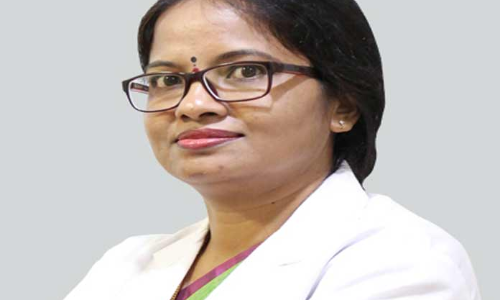Encourage women to undergo cancer probe

Men are from Mars and Women are from Venus This saying holds well not only in psychological aspects but also in physical health issues Over the last few decades womens life has undergone many changes E
Men are from Mars and Women are from Venus’- This saying holds well not only in psychological aspects but also in physical health issues. Over the last few decades women’s life has undergone many changes. Earlier a woman’s health was treated as a simple reproductive health, but this notion has raised arguments across many groups to give a broader view to the term ‘Women Health’ which covers the overall health of the women.
The life expectancy of an Indian woman has now reached close to 70 years. Though cardiovascular deaths are leading cause of death in women, of late we are now seeing an alarming increase in the number of deaths due to cancer in women.
Of all the cancers that affect women, breast and cervical cancers are most common cancers. Breast cancer is now the most common cancers in Indian women especially in urban population.
Whereas, cervical cancer is still the most common cancer in rural women. According to Globocan 2018 data, there were 1,62,468 new breast cancer cases registered every year and around 87090 patients die of breast cancer every year.
If we see the survival of our patients, out of every two women diagnosed with breast cancer, one woman is dying of it. Whereas in United States, out of every 6 women diagnosed of breast cancer only one lady is dying of it. This shows that the mortality of our patients is huge compared to the western world. The reason being, our patients are diagnosed at a very late stage due to lack of awareness and also due to inadequate screening facilities.
According to the latest guidelines, women over 50 years of age should get a mammogram done every two years and women in 40’s should have an individualised decision with their doctors. These recommendations are based on the latest scientific data on potential harms due to mammographic screening, over diagnosis, false- positive and benign biopsy. Hence mammographic screening every two years between 50 to 70 years is a favorable balance of benefits to harm.
Cervical cancer is also a major public health problem in India with an incidence of 96922 cases every year and a mortality of 60,078 cases every year. Cervical cancer is caused by HPV virus infection, which on persistence in the body develops into cancer. But it has a long latency period of 15 to 20 years, which means that we have a sufficient time to detect these precancerous lesions on the cervix. As of now we have two main modalities of screening for cervical cancer and those are pap smear test and HPV DNA testing.
In ideal circumstances with good resource setting screening should start at 25 years age and should be done up to 65 years. If primary HPV testing or co-testing with pap smear is used for screening, then it has to be repeated every 5 years but if only pap smear is available it has to be done every 3 years. In limited resources setting pap smear testing should be done every 5 years starting from 30 years of age or at least 3 times in a lifetime.
(Writer is HOD & Senior Consultant Radiation Oncologist, Continental Hospitals)














